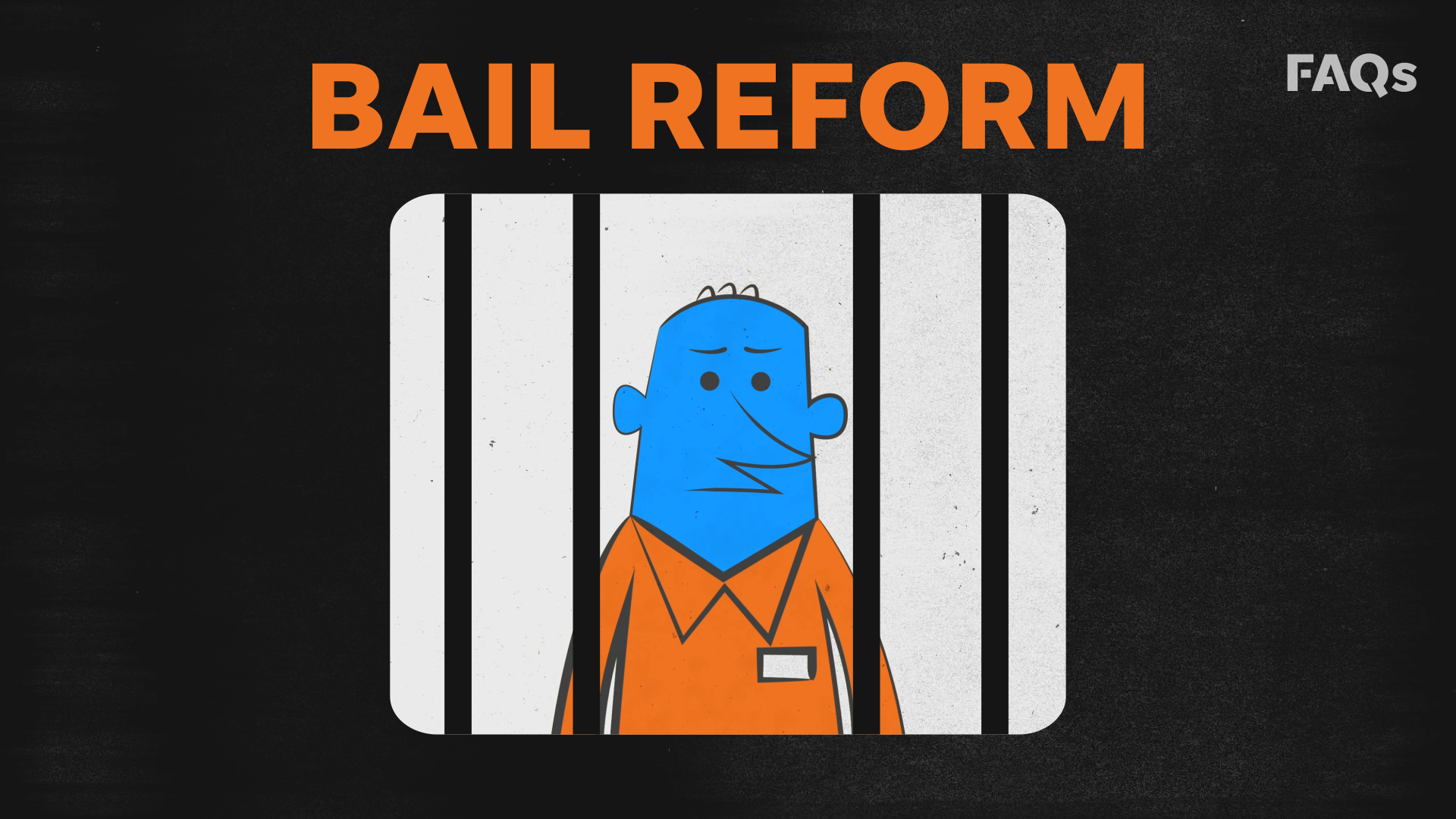New York tweaked bail laws. Is reform working as intended?

- The New York Constitution sets a budget deadline of Apr. 1.
- The bail reforms have long rankled Democrats, who have argued for years about how much to tinker with the reforms that were originally passed in 2019.
- Gov. Kathy Hochul is at odds with her legislative counterparts over her desire to eliminate a key element of the current bail laws.
With days to go before the state budget is due, New York Gov. Kathy Hochul and her Democratic-supermajority legislature were locked in debate over further changes to the bail laws, despite overwhelming public support for giving judges more discretion on bail.
The New York state Constitution gives the governor's office the upper hand in budget negotiations, which is the current venue for Hochul's insistence on rolling back recent bail reforms. But the legislature has so far shown little appetite for changing bail laws that it already amended on several prior occasions.
The constitutional deadline for a budget deal was Friday at midnight.
"I would question whether or not there's a need to do anything with bail reform," Assembly Majority Leader Crystal Peoples-Stokes (D-Buffalo) said in a recent interview with NY1's Errol Louis. Similar comments have been echoed by her Democratic colleagues in the state Senate.
In recent polling, the Siena College Research Institute found strong support among registered New York voters, at 72%, for giving judges more discretion to set bail for serious crimes.
That support was relatively uniform among both Republicans and Democrats, betraying the partisan divide that has emerged on this issue at the state level, especially during the failed bid by former U.S. Rep. Lee Zeldin (R-Long Island) to capture the governor's office last year.
What are the highlights of Hochul's newest bail proposal?
Hochul's proposal, submitted as part of the executive budget for the coming fiscal year, would eliminate the current requirement that judges use the least-restrictive means to ensure a defendant's reappearance in court for bail-eligible offenses.
Instead, a judge would have to consider a host of factors, including the defendant's background and the nature of the charges, but would not be bound by the least-restrictive method of ensuring their reappearance at trial.
"The judge has a wide range of discretion in deciding what remedies or interventions they want to use," commented Arielle Reid, a supervising attorney with The Legal Aid Society of New York City, about the current standards. "You can’t restrict people’s liberty unnecessarily unless that’s needed."
The state budget passed last year included further leeway for judges to look at the seriousness of crimes, and whether those crimes were gun-related, in relation to setting bail.
What do we know so far about whether bail reform is working?
The rhetoric over bail reform has moved far beyond its initial premise − helping disadvantaged New Yorkers return to their families while they await trial. The reform movement was reinvigorated following the 2015 suicide of Kalief Browder, who was jailed for three years at the notorious Rikers Island detention complex without having been convicted of a crime.
Since bail reform first took effect in 2020, prohibiting the use of bail for most misdemeanors and non-violent felonies, the debate became unmoored from this premise and began to shift towards recidivists and community safety. In many instances, politicians blamed community violence on the restrictions put into place by the new bail laws, despite the effects of COVID-19 scrambling crime statistics across the country.
Research has not borne out the most pernicious allegations of bail reform's critics. One recent report released by researchers at the John Jay College of Criminal Justice looked at re-arrest rates for newly-bail-ineligible crimes, comparing them to similar pre-reform cases where bail had been set.
The report found that the two-year re-arrest rate under the reforms, at 44%, was actually lower than the re-arrest rate for similar cases pre-reform, which was 50%. This would indicate that New York's bail reforms had the effect of lowering recidivism. The re-arrest rate for new felony charges was also lower compared to the status quo pre-reform.
Crime a major concern among voters. Is bail reform a factor?
But concerns about community safety have all but ensured that wrangling over the bail laws will continue in Albany, regardless of what the research has shown.
"There's the reality of crime and the perception of crime," notes former Democratic Mayor of Rochester Bob Duffy, who left that post to run for lieutenant governor alongside former Gov. Andrew Cuomo in 2010, ultimately securing a four-year term. "And both are not in a positive place."
Ultimately, the issue comes down to whether people feel safer today than they did last year, Duffy argues. It's a subjective measure, but one that he believes should guide lawmakers' handling of the issue.
Discussion about community safety and its relevance to the underlying purpose of bail, which has long been to ensure re-appearance for trial, has proven to be a third-rail for Democrats.
The question of whether to go even further and impose a "dangerousness" criterion for bail-setting has been a non-starter.
But Duffy believes that in eliminating the "least restrictive" language, "there is a safety aspect" to Hochul's proposal, perhaps addressing the thorny question of safety through other means.
"A majority of the reforms I agree with. I agree with what it's trying to do, and I think most people feel the same way," Duffy said. "It's tweaking some of the aspects of it to make it better, and looking at some of the elements in the system that are not working, especially for neighborhoods and communities."
Asher Stockler is a reporter for The Journal News and the USA Today Network New York. You can find him on Twitter at @quasiasher or send him an email at astockler@lohud.com. Reach him securely: asher.stockler@protonmail.com.